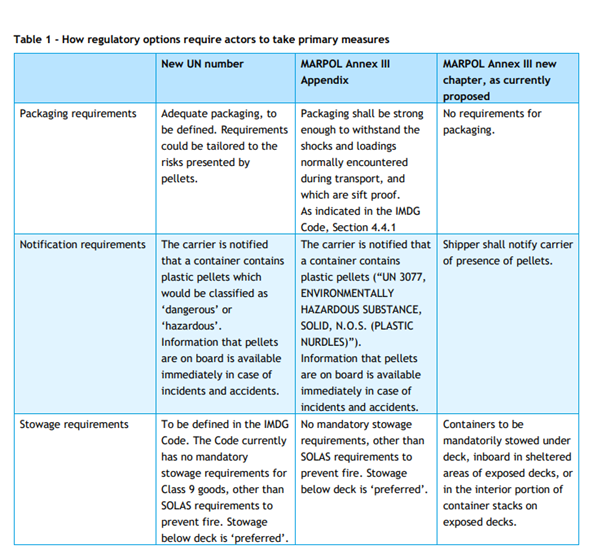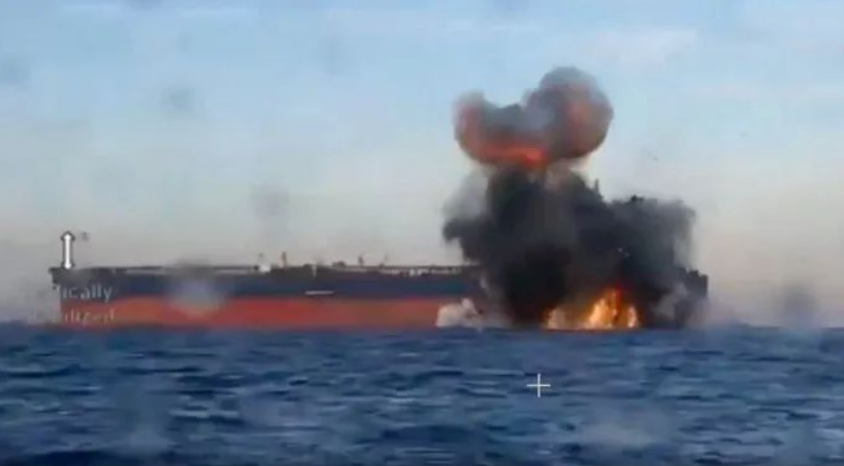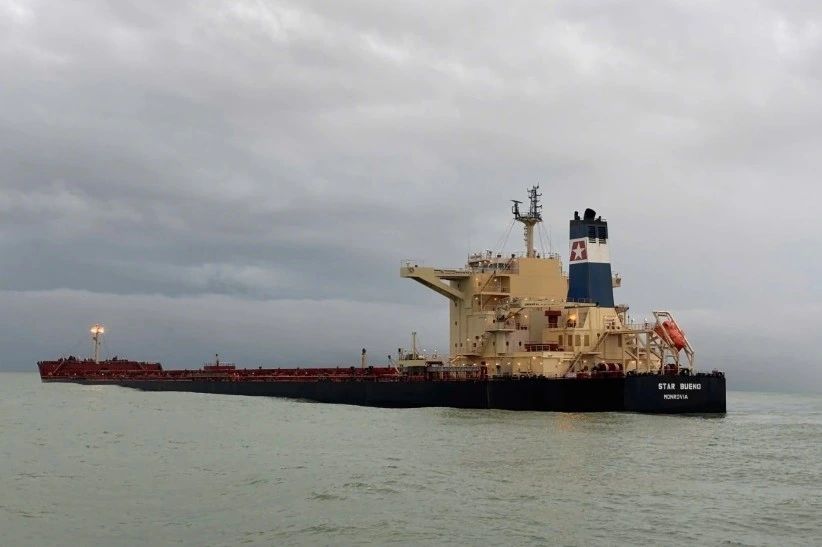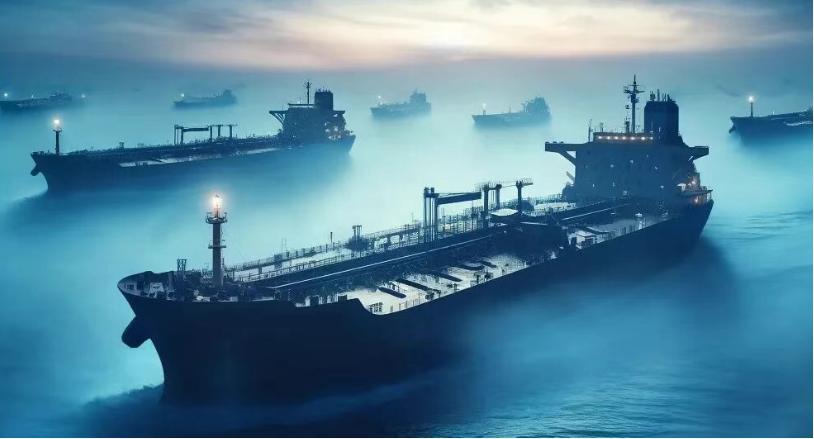To reduce the risk of large nurdle spills experienced in recent years, the regulatory work is now focussing on packaging requirements for plastic pellets within the freight container; notification to the carrier so that containers containing plastic pellets can be identified quickly to aid recovery, and stowage requirements for containers containing plastic pellets.
Sri Lanka proposed designating pre-production plastic pellets, often called “nurdles”, as a dangerous cargo following the catastrophic spill from the X-Press Pearl in 2021. The IMO Pollution Prevention and Response Sub-Committee (PPR) met a year ago (PPR 9) to discuss Sri Lanka’s and additional proposals to regulate the carriage of nurdles. The key difference between the various proposals was whether to classify nurdles as a dangerous cargo subject to the IMDG Code and regulate accordingly or to continue to build on voluntary industry-initiated programs, essentially Operation Clean Sweep.
The outcome of PPR 9 was to send the various proposals to a correspondence group for refinement and to report back to the PPR 10, set to meet 24-28 April. In a previous article we outlined the environmental impact of nurdle spills, the current regulatory framework for clean-up and compensation and the proposals for regulation of carriage. In this follow-up article we outline the various approaches set out in the Correspondence Group report and discuss the pros and cons of the differing approaches.
A brief refresher on nurdle spills
Nurdles are about the size and shape of a lentil and are the building blocks of nearly all plastic products. Petrochemical companies produce nurdles from oil and gas resulting in various polymers that can be melted and then moulded or extruded to form products ranging from plastic bags and food packaging to plumbing pipes and much of the interior of airplanes. Nurdles are transported from the manufacturing site by truck, train and ship to distributers or plastic product manufacturers. Marine shipping is by container (although there is no current restriction to carriage in bulk).
Like all plastic litter, most nurdles reach the sea from land sources. Spills at sea do occur when containers are pierced or lost overboard due to casualties. In 2020 about 13 MT of polypropylene nurdles spilled from a single damaged container aboard the ro-ro vessel Trans Carrier affecting to varying degrees about 1,000 km of the coastline in Norway and Sweden. Clean-up took more than a year. Also in 2020, – six containers of low-density polyethylene nurdles were lost off Cape Agulhas in South Africa. Dispersed in the strong Agulhas current, the spill affected some 1,600 km of coastline.
By far the worst nurdle spill occurred in May 2021 off Colombo, Sri Lanka after the X-Press Pearl caught fire and partially sank. The vessel was coming from India to Sri Lanka with 1,377 containers on board, 422 of which contained nurdles of various polymers. The nurdles, included burnt and melted nurdles dispersed over 300 kilometers of the Sri Lanka coastline. The clean-up is on-going with the high concentrations already removed.
Once in the ocean, low density nurdles (polypropylene polyethylene) float on the surface, allowing them to spread over large areas by wind and currents. Some will wash up on beaches, others will continue to circulate in ocean currents. The impacts on marine life are wide, the main ones being ingestion, leaching of additives and acting as vectors for persistent organic pollutants, microbes and invasive (micro)organisms. Nurdles, like all plastics, persist in the environment. Their small size and dispersion over large areas makes clean-up laborious and expensive. It is accepted that only a portion of spilled nurdles can be found and removed despite best efforts. The persistence of nurdles and impossibility to completely remove them from the environment clearly supports regulating carriage conditions to reduce the risk of spills.
The work of the PPR Correspondence Group on plastic pellets
Norway led the Correspondence Group (CG) through three rounds of discussion and commentary. The main discussion points in the third round included:
·Refinement of the wording of packaging, notification, and stowage recommendations to be issued as a Circular by the Subcommittee on Carriage of Cargoes and Containers (CCC) as an immediate and interim measure.
·Whether to make carriage conditions mandatory and how to do so. Three options for mandatory regulation were discussed and participants were asked which option they favoured.
Draft interim guidelines - discussion of the elements of the proposed CCC Circular
The CG as a whole strongly supported recommendations that would be immediate and temporary pending mandatory requirements. The recommendations are intended to be issued as a Circular by the IMO Subcommittee on Carriage of Cargoes and Containers and the CG work was to prepare a draft to be further discussed within a PPR 10 working group and subject to changes that may be made by the CCC.
Following the first and second rounds, the primary measures to reduce risk of spills were widdled down to:
·Packaging requirements/recommendations for plastic pellets within the freight container
·Requirements/recommendations for notifying the carrier so that containers containing plastic pellets can be identified quickly to aid in recovery
·Stowage requirements/recommendations for containers containing plastic pellets
First order of business – defining nurdles subject to the carriage recommendation
The European Chemical Industry Council (CEFIC) representing the European petrochemical segment proposed a definition of nurdles:
“Plastic pellets means [(a) solid polymeric substances, or blended mixtures (consisting of polymers and other substances of varying percentages), that are insoluble in water and transported in granule or nurdle form, or as powder or flakes; that (b) have a diameter of 5 mm or less. Plastic pellets include, but are not limited to, polymers such as polyethylene, polypropylene, polystyrene, polyethylene terephthalate, or polyvinyl chloride including a size limitation to 5 millimetres which is boundary for microplastics.”
While CG participants agreed with including a definition, many took issue with the proposed size limitation. The 5mm size is a generally accepted limit for microplastics, but many pointed out that a spill of 5.5mm or 6mm pellets would cause just as much environmental harm and be just as difficult to clean-up as a marginally smaller pellet size. And as the primary measures set out in the recommendations would likely be the template for mandatory regulation, a size limitation would be an invitation to avoid regulation by slightly increasing the size of the nurdles manufactured.
The debate over packaging
In the third round, the CG participants commented on wording: “Plastic pellets should be packed in good quality packagings/bags with a maximum mass of [25 kg] per package/bag. The use of single bags should be avoided”. “Single bags” refers to using a single plastic liner within the container. When the steel container is pierced, so is the plastic liner resulting in spill of nurdles even when the container itself remains on board as was the situation in the Trans Carrier spill.
CEFIC argued that there should be no packaging recommendation and to maintain the options currently in use by shippers “bags, boxes, drums, supersacks, gaylords, Octabins and lined bulk containers” arguing that the root cause of nurdle spills was not packaging within the container but instead loss of the containers, fires, or other casualties. CEFIC argued that the packaging in use was satisfactory for normal carriage situations and shippers should not be required to do more. At the other end of the spectrum was the environmental NGO Clean Shipping Coalition who maintained that packaging within the container should be required to withstand loss of the container and to remain intact for better odds of retrieval.
Notification and stowage requirements
The recommendation is that “transport information should clearly identify, as an addition in the cargo information required by SOLAS Regulation VI/2, those cargoes containing plastic pellets.” The intent of notification is to more quickly identify containers with nurdles to aid in retrieval should they be lost and also to initiate clean-up and contingency planning earlier. How notification is to be made – by an IMDG code or a new process based on the bill of lading is part of the discussion about the options for mandatory regulations.
Following discussion within the three rounds, Norway reports the draft stowage recommendation as:
“Freight containers containing plastic pellets should be properly stowed and secured so as to minimize the hazards to the marine environment without impairing the safety of the ship and persons on board. Specifically, freight containers containing plastic pellets should be stowed:
1. under deck wherever reasonably practicable; or
2. inboard in sheltered areas of exposed decks.”
Underdeck stowage is recommended by the plastic industry initiative Operation Clean Sweep and the recommendation was broadly supported. A possible difficulty is volumes shipped and whether stowage underdeck would displace other more dangerous cargos.
Broad(er) support for mandatory regulation
Looking at the regulatory proposals, almost all of the correspondence group participants including CEFIC, supported some form of mandatory regulation. In the submission to PPR 9, CEFIC opposed mandatory regulation and proposed continued plastics industry self-regulation though Operation Clean Sweep. In the second round of the correspondence, CEFIC proposed a new regulatory solution by adding a new chapter to MARPOL Annex III. This new proposal was subject to comments by the participants in the third round.
The Correspondence Group Report does not recommend a preferred instrument but lays out the three proposals:
1. an assignment of an individual UN Number (class 9) for plastic pellets transported at sea in freight containers;
2. an amendment to Appendix I of MARPOL Annex III that would recognize plastic pellets as a harmful substance and
3. a new chapter to MARPOL Annex III that would prescribe requirements for the transport of plastic pellets in freight containers without classifying the cargo as a harmful substance/dangerous goods.
The differences between the three regulatory proposals can be summarized:

Assigning a new UN number allows for closely tailoring of requirements to nurdles but the process takes longer because the number must be assigned by the UN Sub-Committee of Experts on the Transport of Dangerous Goods on application by the IMO. The option of amending Appendix I to MARPOL Annex III in order to recognize nurdles as a hazardous substance can be implemented quicker and within the IMO by using an existing number but does not allow for tailoring of requirements to nurdles. In round 3 of the CG, Norway, several other national participants and the Clean Shipping Coalition preferred amending Appendix I while the marine insurance industry as represented by the IG Group and IUMI preferred a new UN number.
The proposals to create a new UN number and to amend Appendix l of MARPOL Annex III both result in classification of nurdles as a dangerous and hazardous substance. An IMDG designation fits within carriers’ existing logistics systems. Both options would also make spills subject to the Hazardous and Noxious Substances Convention should it come into force. The HNS Convention follows the same model as the CLC and Fund Conventions (covering spills of oil from tankers) strict shipowner liability for spills, mandatory insurance, a liability limit for the shipowner and a fund in excess of the shipowner’s limitation to respond to clean-up and compensation in the event of a spill.
P&I Clubs cover pollution liability under the law applicable in the jurisdiction of the spill. Clubs prefer certainty under a uniform liability and compensation regime setting a level playing field on an international basis for a trans-national industry.
CEFIC speaking for the European plastics manufacturers opposes classifying nurdles as dangerous or hazardous and therefore subject to the HNS Convention stating as one reason that the compensation fund that would apply in excess of the shipowner’s limitation would come from the receivers of the cargo which CEFIC considers not in line with the polluter pays principle.
The next steps
The Correspondence Group asks the Pollution Prevention and Response Sub-Committee to establish a working group to take the proposals forward including in the short term to further develop the carriage recommendations. The CG further invites the IMO Marine Environment Protection Committee (MEPC) at its meeting in July (MEPC 80) to instruct CCC 9 to review and finalize the draft circular with the view to issuing a CCC Circular before MEPC 81 which would mean before the end of this year.
In the submissions before PPR 9 in April 2022, the carrier side as represented by the World Shipping Council and the International Chamber of Shipping as well as NGOs like Friends of the Earth supported proposed mandatory regulation of carriage conditions as proposed by Norway and others. Insurers (IG and IUMI) also support mandatory regulation and although the regulatory path is different the overall result would be similar. Last year the plastics industry as represented by CEFIC opposed mandatory regulation yet now favours mandatory regulation in principle (although opposes designation of nurdles as a dangerous cargo). From last year’s debate over mandatory vs. status quo self-regulation we are now looking at three regulatory options. This is progress.
Parallel initiatives
The Maritime Research Institute of the Netherlands (MARIN) is leading a joint industry project, Top Tier, to investigate what is needed to drastically reduce losses of containers from container vessels. The participants in the three-year project include container shipping lines, class societies, international authorities, insurers, research institutes and other stakeholders. The International Group of P&I Clubs is a participant.
Norway, South Africa, the International Group of P&I Clubs and ITOPF have submitted to PPR 10, a draft of best practices for the clean-up of nurdle spills. Clean-up can be effective for concentrated areas and maximizing clean-up using best practices is important, but it must be remembered that even using best practices, only a portion of nurdles can be found and removed.
According to manufactures organization Plastics Europe, about 40% of plastic is used for packaging. Much of consumer packaging starts life as nurdles made from polypropylene and polyethylene which float and distribute widely if spilled. There are many national and regional bans in place or coming into place for single use items such as plastic bags. Bans of single use plastic where alternatives are available should be encouraged on the national, regional, organizational and personal levels. Recycling while important for waste management, is not an answer to preventing nurdles spills because the end result of the recycling process is nurdles which are then transported for use in products that incorporate recycled plastic.
In 2022, the UN Environmental Assembly adopted an historic resolution to develop an international treaty on plastic pollution including pollution in the marine environment. The terms are now in negotiation and will include the entire life cycle of plastic polymers, so will include nurdles. Stakeholders in marine transportation have the opportunity within the IMO to press for measures fit for purpose and should not wait for a treaty as action to reduce the risk of nurdles in our marine environment is needed now.
Source: Gard
Source: Gard
The opinions expressed herein are the author's and not necessarily those of The Xinde Marine News.
Please Contact Us at:







